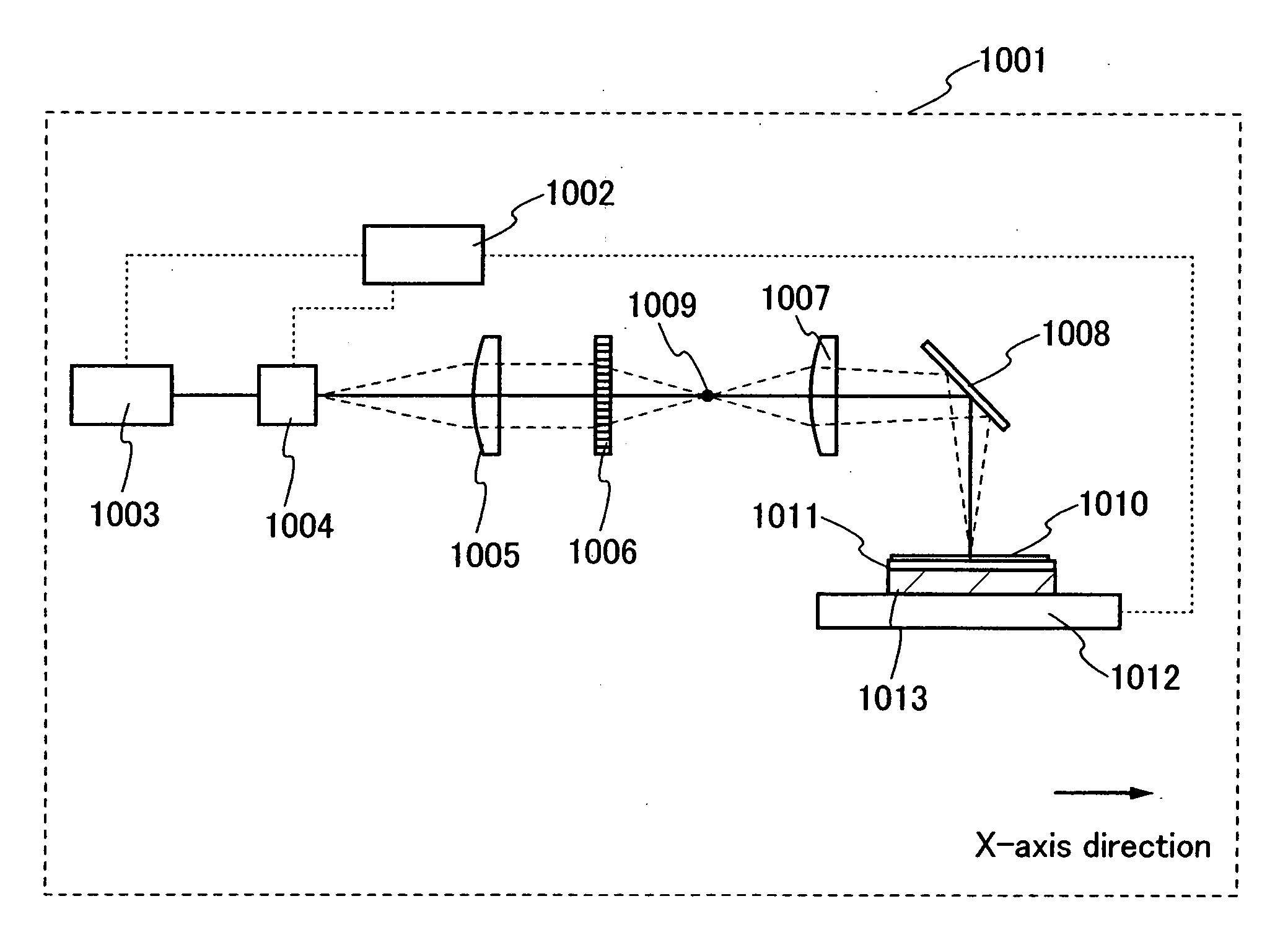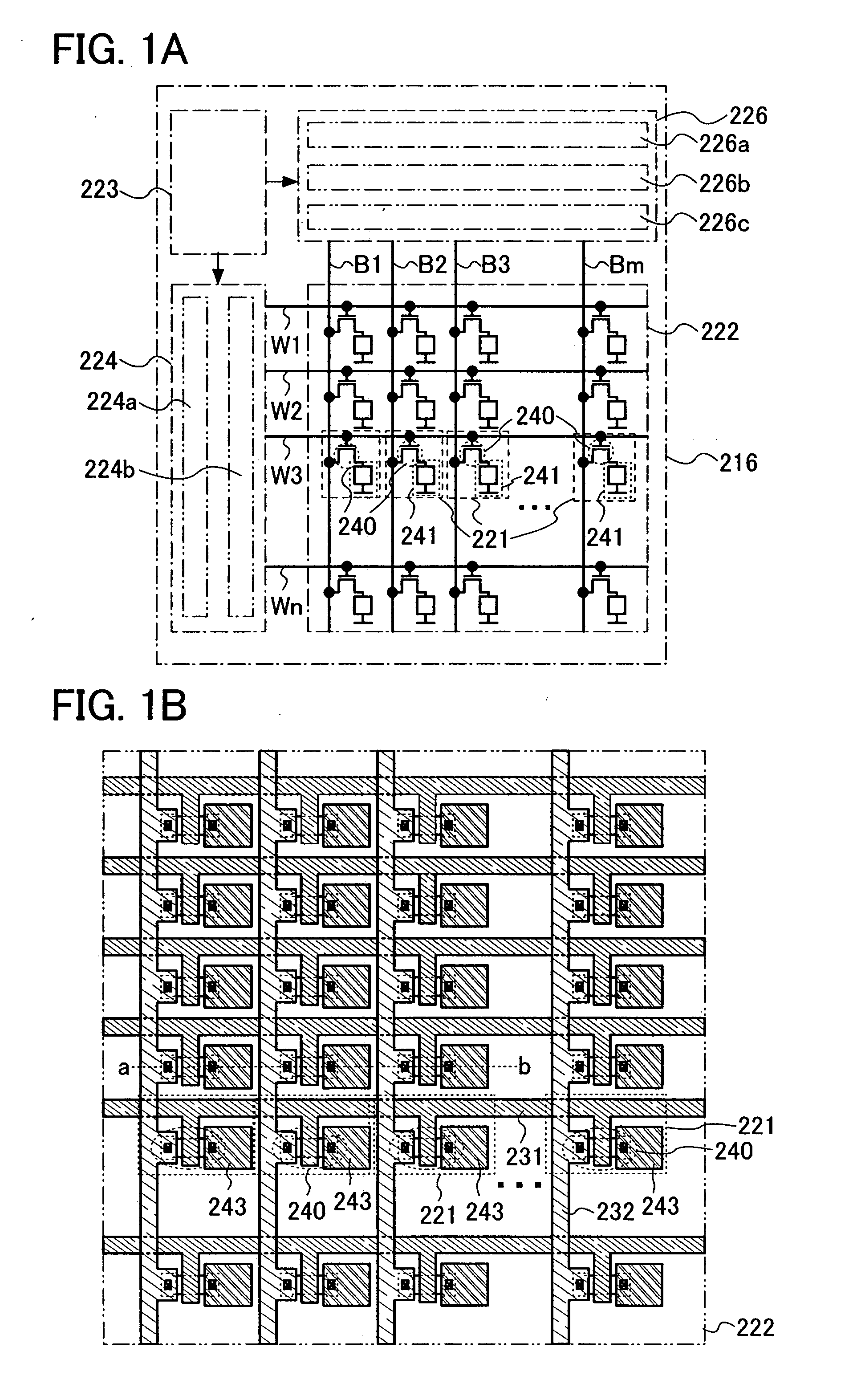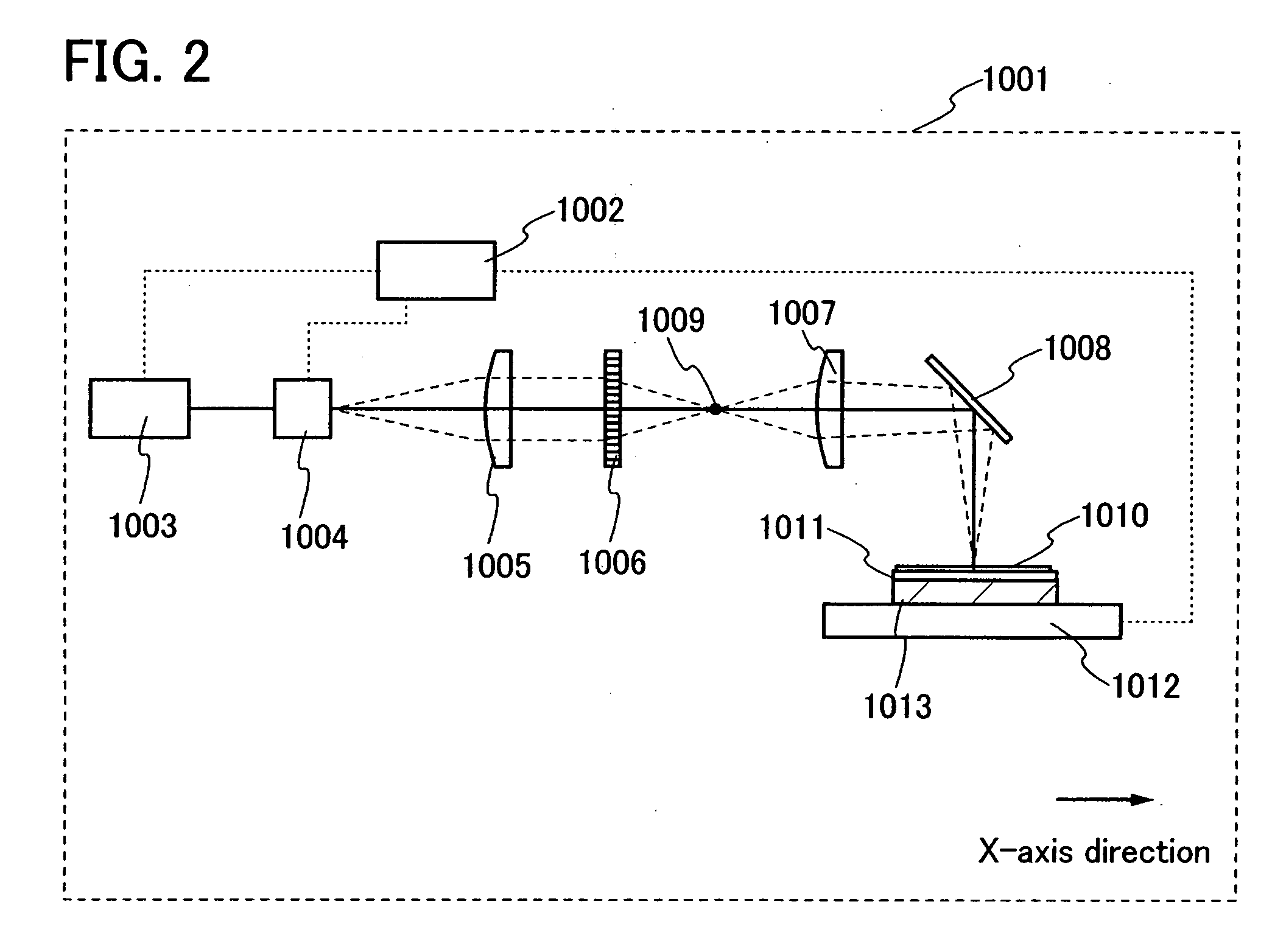Method for manufacturing semiconductor device
a semiconductor device and manufacturing method technology, applied in the field of laser irradiation method, can solve the problems of increasing the drive voltage for writing, making normal writing impossible, and hard current flow, so as to improve the productivity of id chips or the like having the semiconductor device, improve the speed of writing data, and improve the productivity of semiconductor devices
- Summary
- Abstract
- Description
- Claims
- Application Information
AI Technical Summary
Benefits of technology
Problems solved by technology
Method used
Image
Examples
embodiment modes
[0042]Embodiment modes of the present invention will be described with reference to the drawings. Note that the present invention can be implemented in many different forms, and it is easily understood by those skilled in the art that the modes and details can be variously modified without departing from the spirit and scope of the present invention. Therefore, the present invention is not construed as being limited to the description of Embodiment Modes. In all the drawings, the same reference numerals denote the same parts or the parts having similar functions, and the descriptions will not be repeated.
embodiment mode 1
[0043]In this embodiment mode, a method of writing data into a memory circuit area of a semiconductor device, in which the memory circuit area includes an organic compound, will be explained with reference to FIGS. 1 to 4B.
[0044]FIG. 1A is a schematic view of a semiconductor device having a memory circuit including a memory cell array 222 in which a plurality of memory cells 221 are arranged in matrix; a bit line driver circuit 226 including a column decoder 226a, a read circuit 226b, and a selector 226c; a word line driver circuit 224 including a row decoder 224a and a level shifter 224b; and an interface 223 having a writing circuit, which communicates with the external. Note that the structure shown here is only an example; accordingly, the memory circuit 216 may include another circuit such as a sense amplifier, an output circuit, or a buffer; alternatively, the wiring circuit may be provided in the bit line driver circuit.
[0045]The plurality of memory cells 221 each include at ...
embodiment mode 2
[0069]In this embodiment mode, a configuration of a laser irradiation apparatus having a different configuration from the laser irradiation apparatus for irradiating an organic compound layer with laser beams, which is shown in FIG. 2 will be described. A configuration of the apparatus and a method of laser irradiation using a reflective diffractive optical element as a diffractive optical element will be described with reference to FIG. 5.
[0070]FIG. 5 is a schematic diagram of a laser irradiation apparatus of this embodiment mode. A laser beam emitted from a laser oscillator 401 passes through a deflector. In this embodiment mode, an example of using an acousto-optic deflector (AOD) 402 as the deflector will be described. Note that the deflector used in the present invention is not limited to an AOD. For example, the direction of travel of a laser beam may be controlled by using a galvanometer mirror. An AOD is a device which deflects a laser beam by an acousto-optic effect in an o...
PUM
| Property | Measurement | Unit |
|---|---|---|
| Electrical resistance | aaaaa | aaaaa |
| Electrical conductor | aaaaa | aaaaa |
| Reflection | aaaaa | aaaaa |
Abstract
Description
Claims
Application Information
 Login to View More
Login to View More - R&D
- Intellectual Property
- Life Sciences
- Materials
- Tech Scout
- Unparalleled Data Quality
- Higher Quality Content
- 60% Fewer Hallucinations
Browse by: Latest US Patents, China's latest patents, Technical Efficacy Thesaurus, Application Domain, Technology Topic, Popular Technical Reports.
© 2025 PatSnap. All rights reserved.Legal|Privacy policy|Modern Slavery Act Transparency Statement|Sitemap|About US| Contact US: help@patsnap.com



